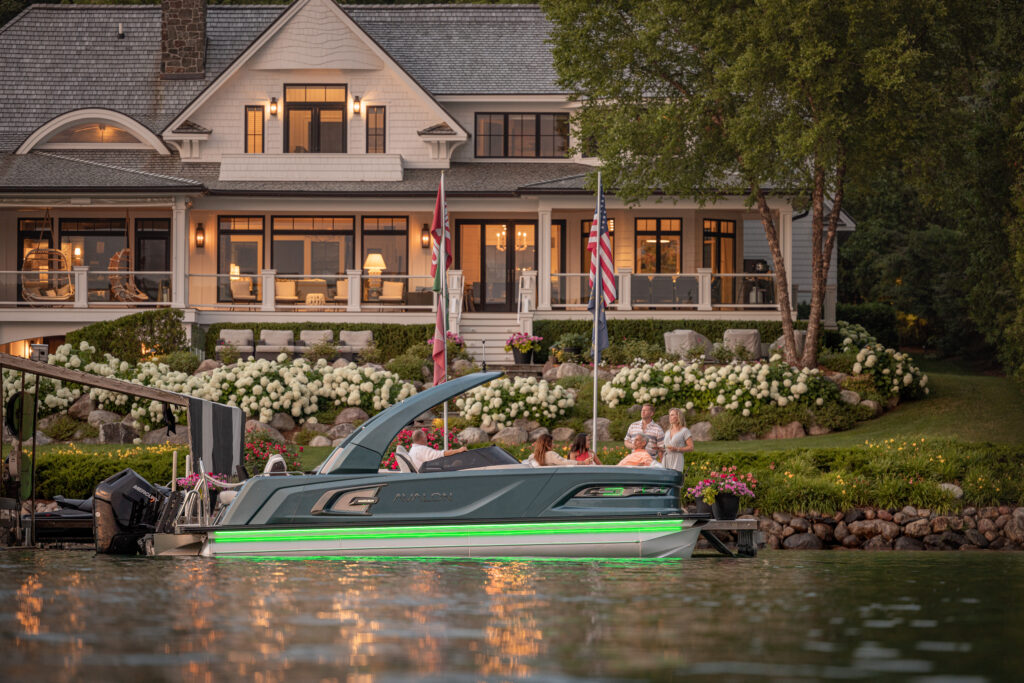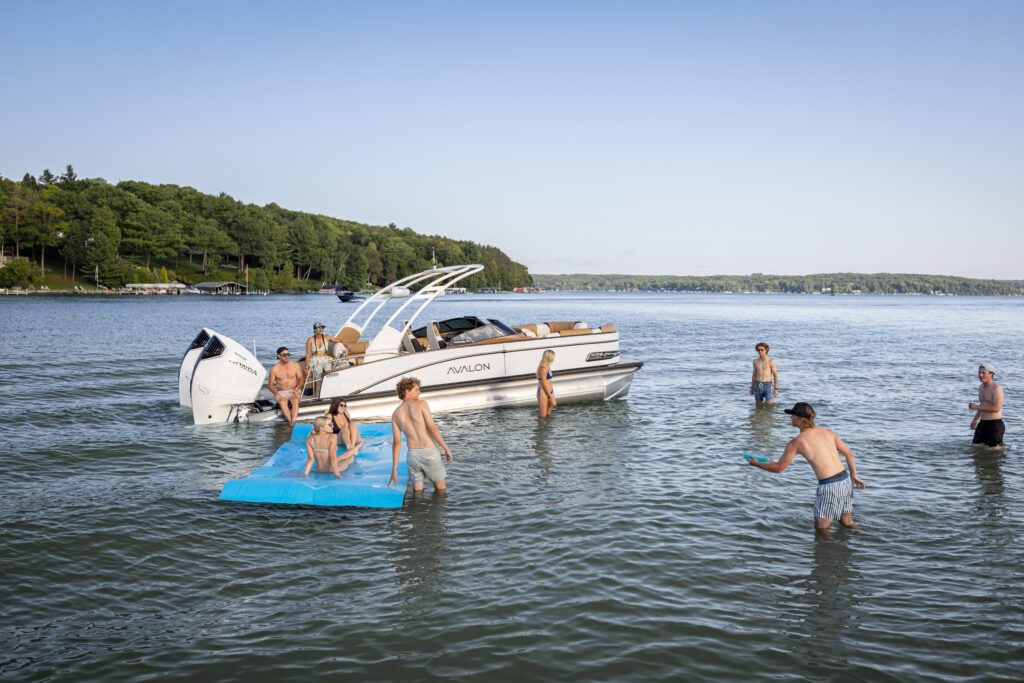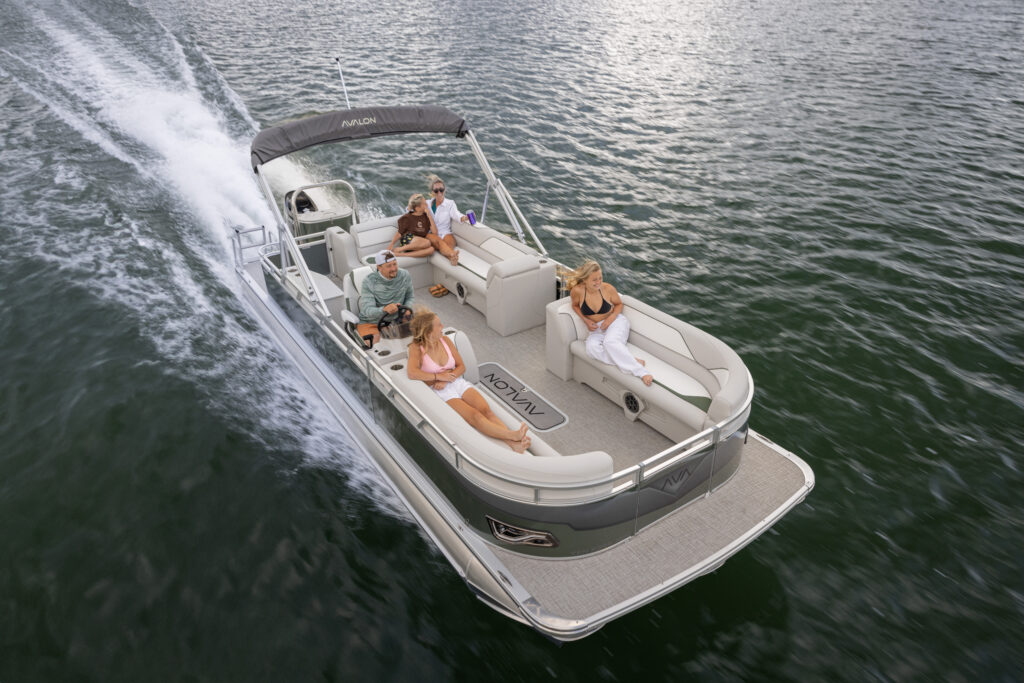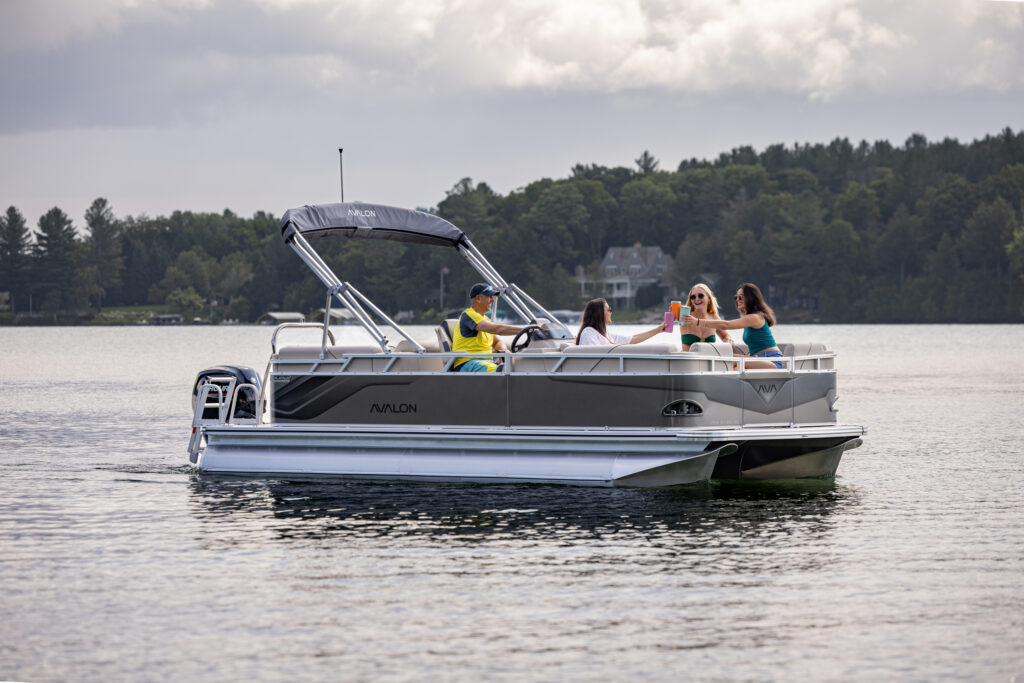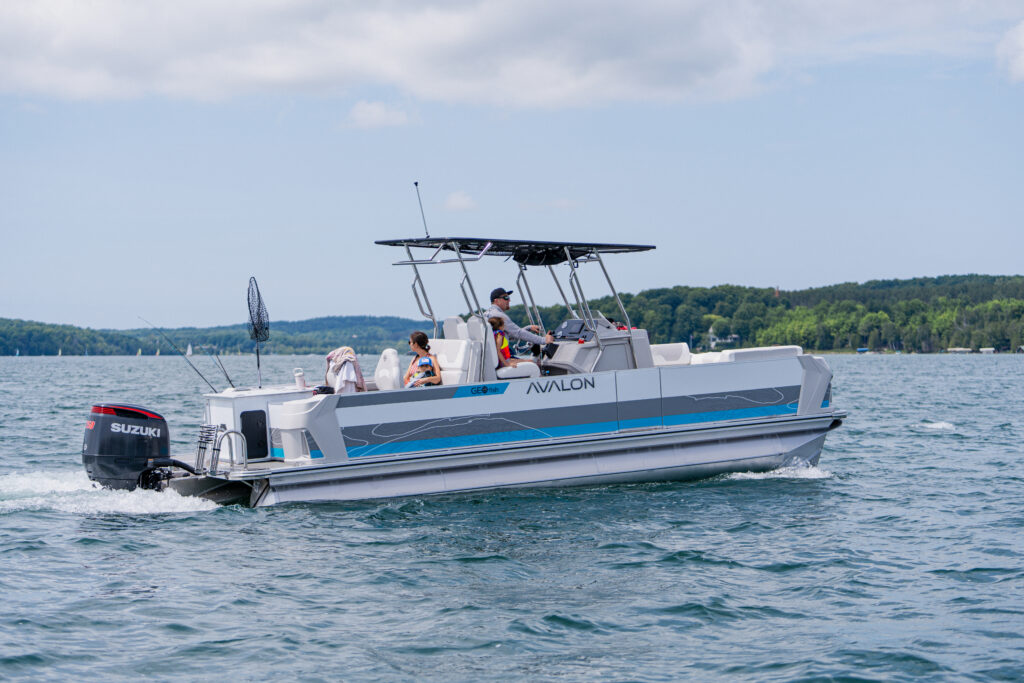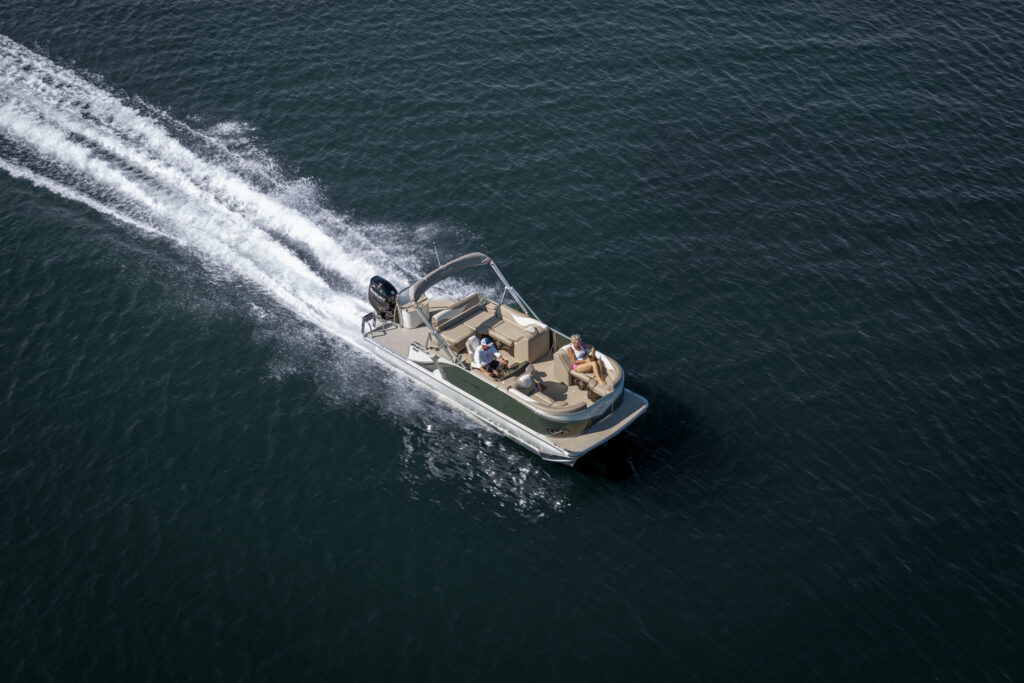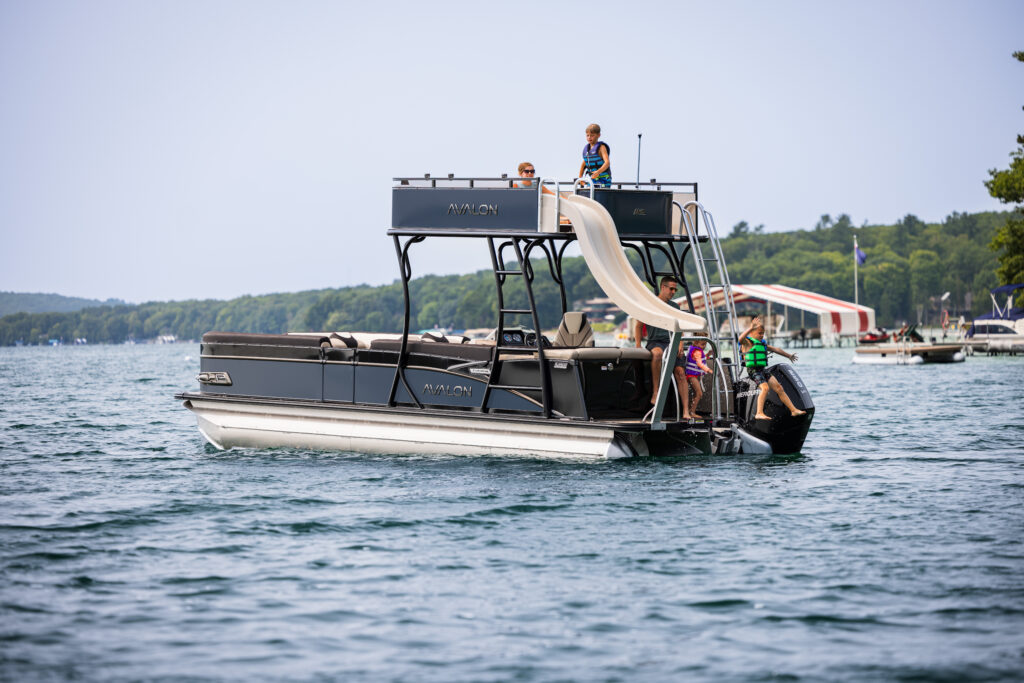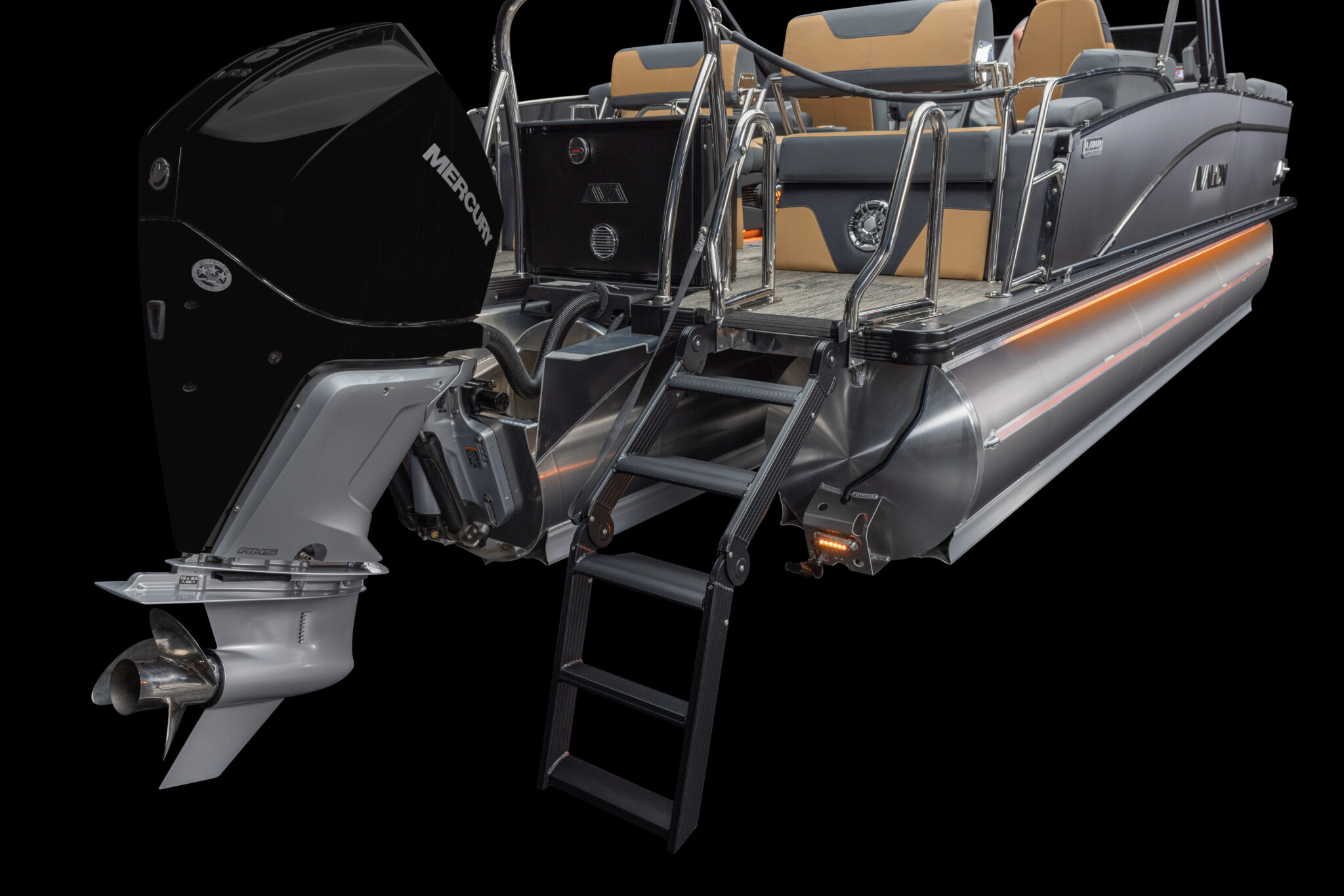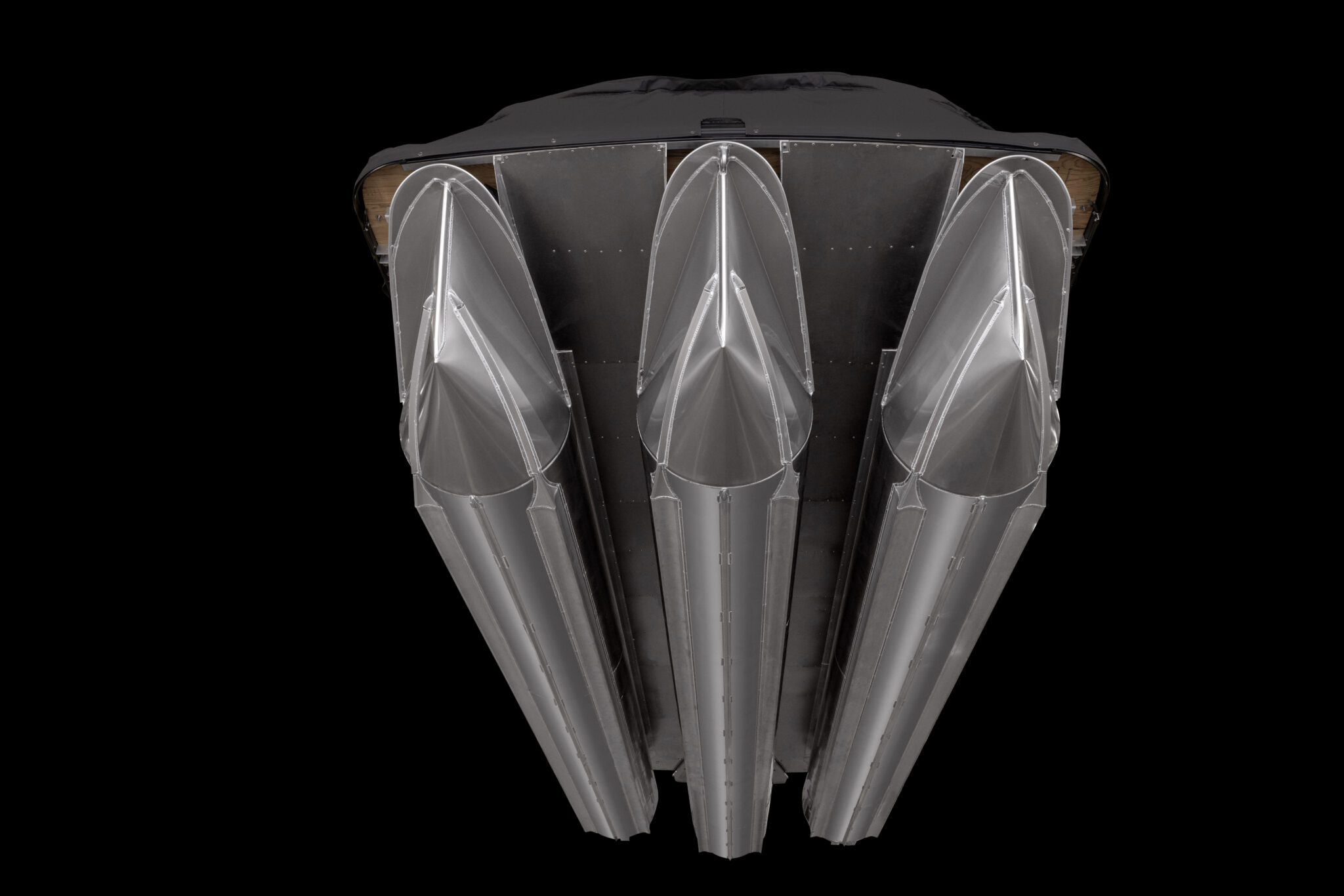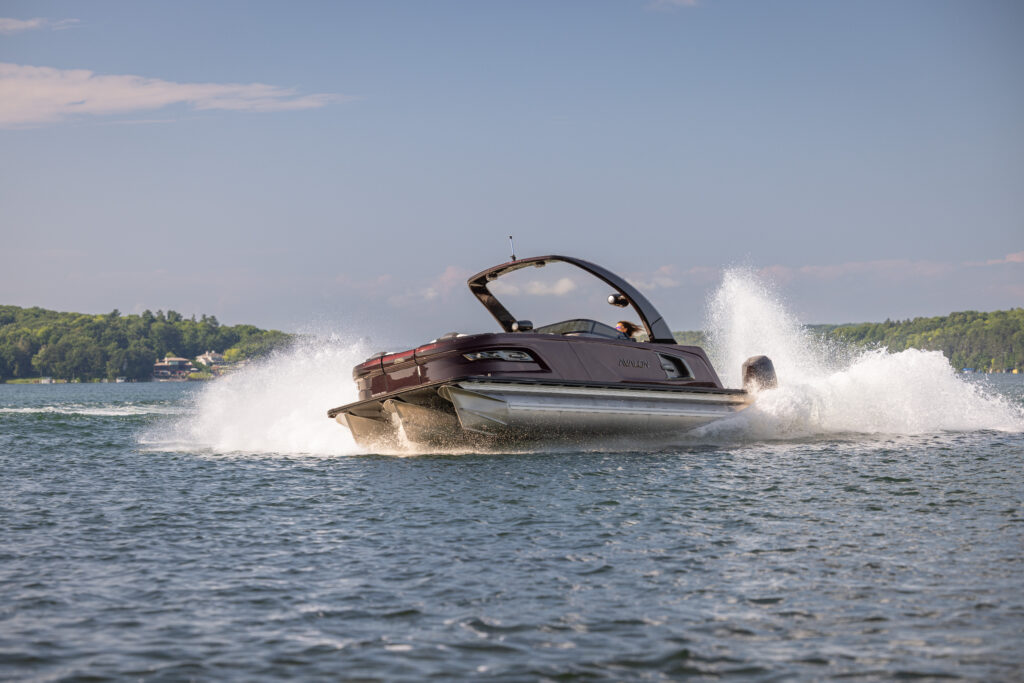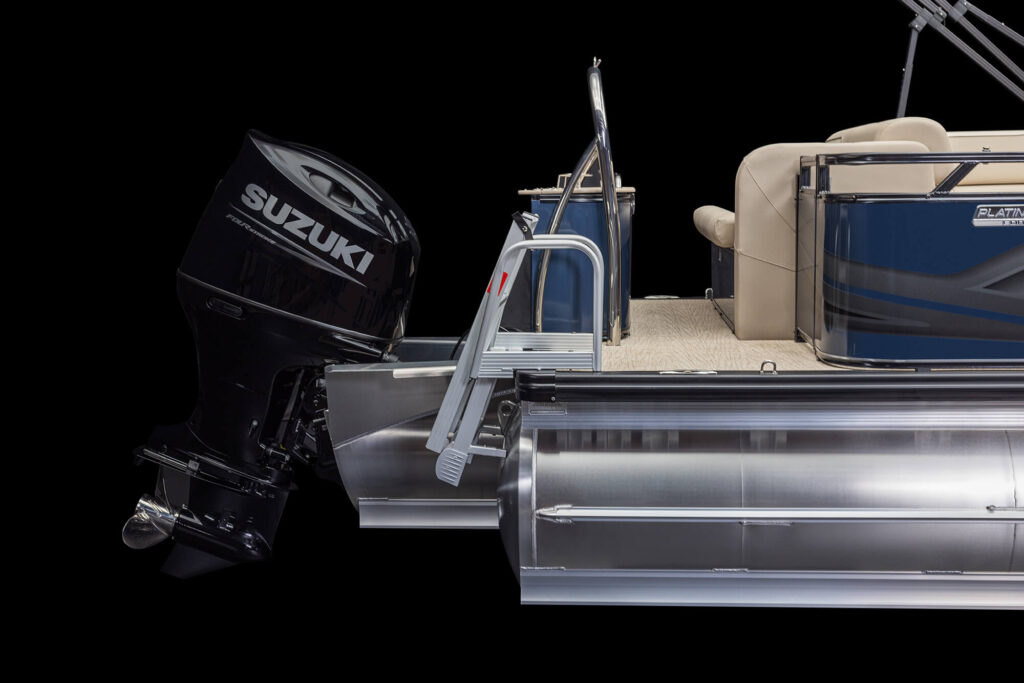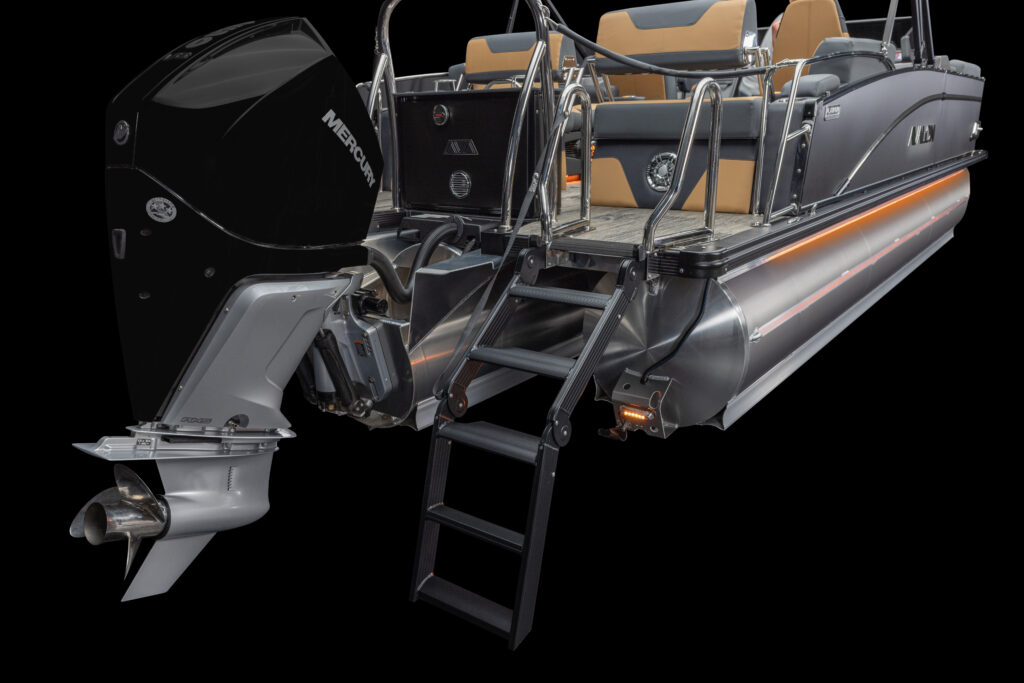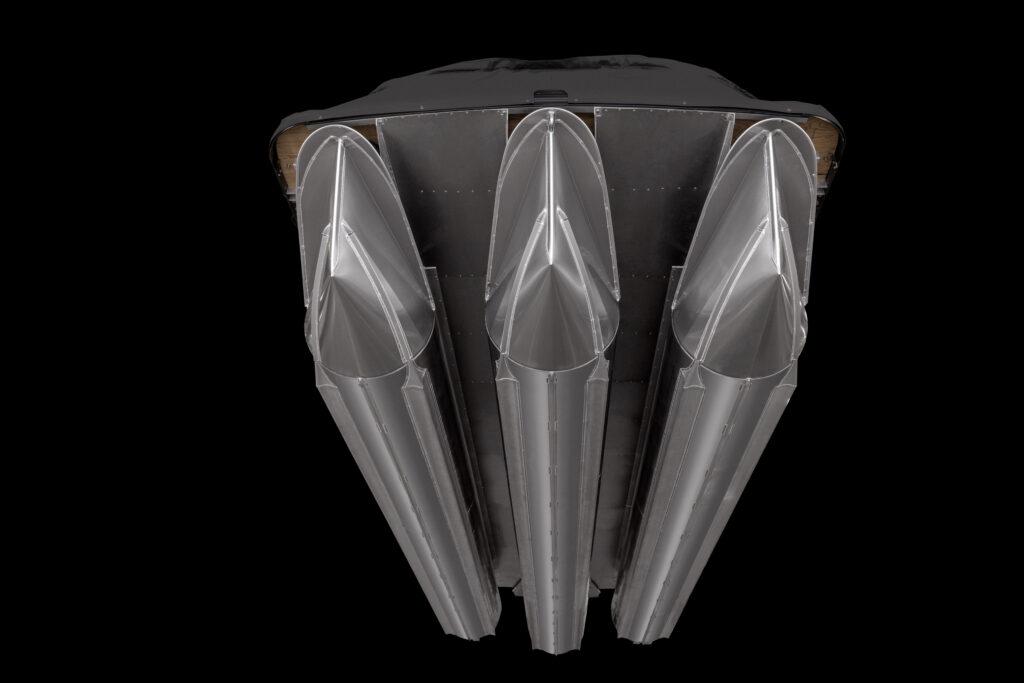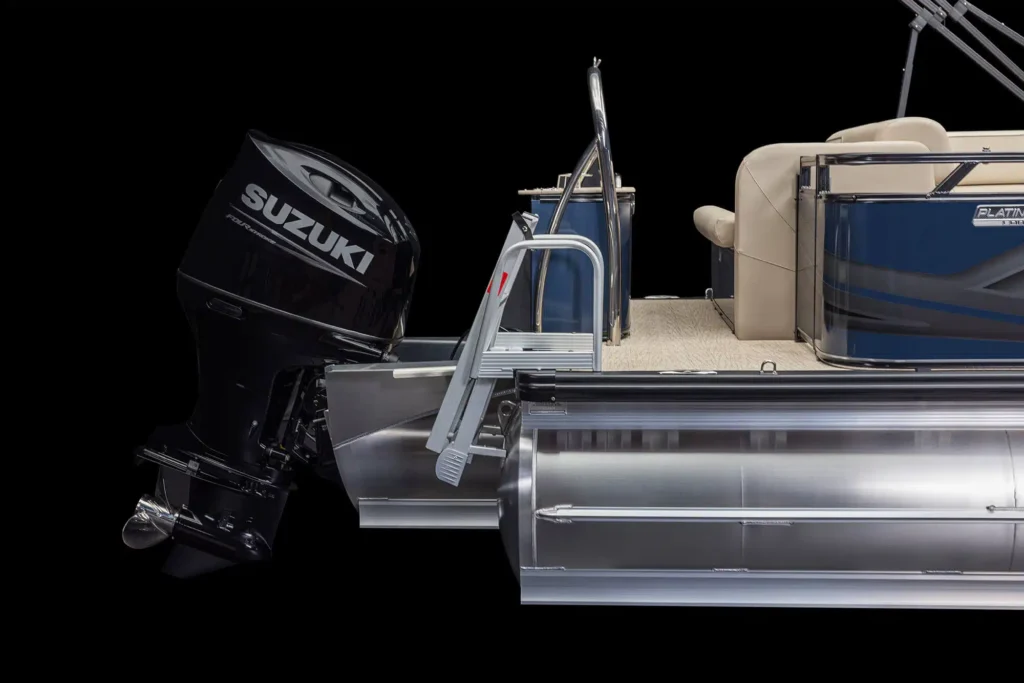Besides careful handling and mechanical maintenance, regular cleaning will keep your vessel looking and performing its best for many years.
General Principles for How to Clean a Pontoon Boat
Which Cleaning Products Should I Use?
For any carpeting, a vacuum should be all you need for the daily cleanings, saving the more advanced carpet-cleaning products for end-of-season cleaning.
How Often to Clean
While wooden flooring and metal components may not require cleaning after every outing, it is best practice to vacuum any carpets and wipe down any furniture. Anything that has a tendency to gather dirt should be cleaned at a heightened regularity.
Cleaning Aluminum Boats
Giving the boat’s aluminum components (the pontoons and the side panels) a thorough waxing every three to six months helps keep it in the best condition during summer.
In luxury models, aluminum is restricted to the pontoons, while the exterior uses fiberglass. This fiberglass will also benefit from a thorough waxing each season.
What to Avoid
How to Clean a Pontoon Boat for Winterizing
Unless you live in a part of the country with year-round good weather, your pontoon boat will spend a good portion of the year in storage over winter. Cleaning is imperative before winterizing your boat.
Leaving grime and algae to dry out and harden on your vessel over winter makes them challenging to remove come summer. Do not leave barnacles or zebra mussels to get locked onto your hull. Cover your boat over winter.
How to De-Winterize a Pontoon Boat
When your pontoon boat comes out of storage at the start of summer, de-winterize it with a good cleaning.
Check for any rodents or other pests that may have snuck in, and identify any patches of mildew or mold for special attention. These will require cleaning solutions formulated for removing fungal growth.
Use liquid soap and water to clean all fiberglass components. Use purpose-formulated aluminum cleaning solution for aluminum parts – avoid household cleaners that often contain compounds that will react with aluminum and damage it.
How to Clean a Pontoon Boat Used for Fishing
Cleaning the Flooring of a Pontoon Vessel
Cleaning Marine Vinyl
Should any substance spill on woven vinyl, take action as soon as possible to prevent staining. Follow the steps above, but use oxygen bleach (hydrogen peroxide) in the cleaning solution.
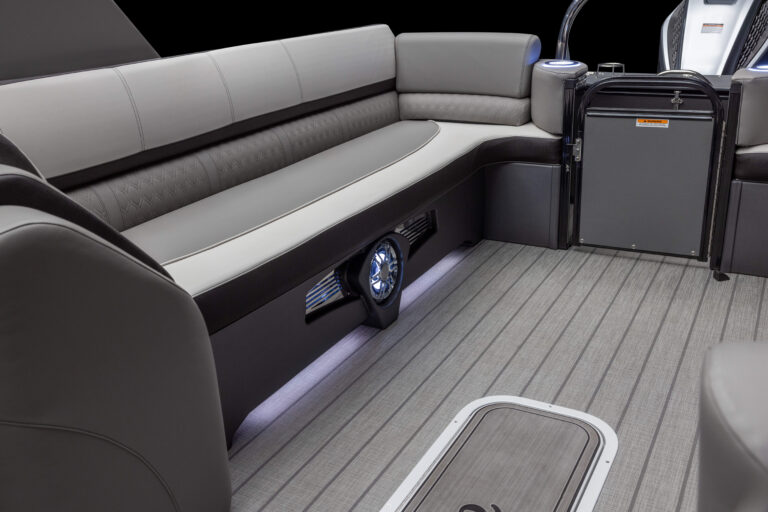
Cleaning Wooden Decks and Flooring
If you opt for a wooden deck, look after it. Ironically, over-cleaning is more likely to wreck a deck than neglect.
As with other components of a pontoon boat, the wood of your deck is vulnerable to corrosive substances. Avoid using caustic substances and chlorine bleach to remove grime—oxygen bleach is okay.
Using a gentle cleanser, such as ECO-100 or ECO-300, scrub across the wood’s grain with a soft bristle brush or pad. Rinse off the residue with water.
Under no circumstances scrub *with* the grain; this will lift out the softer wood in the boards, creating a rough, ridged surface that accumulates grime and water, allowing mold and mildew to thrive and shortening the wood’s lifespan.
While we do not recommend pressure washing any part of your craft, this goes double for using them on a wooden deck. The force blasting away the softer pieces of the wood will achieve in one fell swoop what you could only achieve over many months by hand-scrubbing with the grain.
Carpeting
Cleaning Seats on Pontoon Boats
How to Clean a Pontoon Boat: The Damaging Effects of Saltwater
Saltwater has a powerful corrosive effect on metals, including aluminum, especially when stray electric current from onboard equipment interacts with the salt ions.
The sea also hosts some impressive (and scary) bacteria that can digest substances such as metal and concrete. Other organisms, such as mussels and barnacles, may grow on your vessel’s pontoons, fouling them.
To prevent such effects, apply anti-fouling paint where appropriate, and consider using zinc anodes. Regularly inspect the paintwork and electrical connections, and repair any damage.


